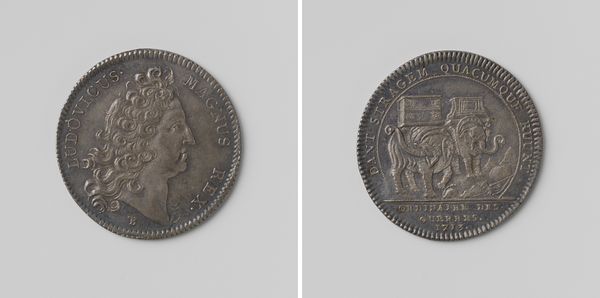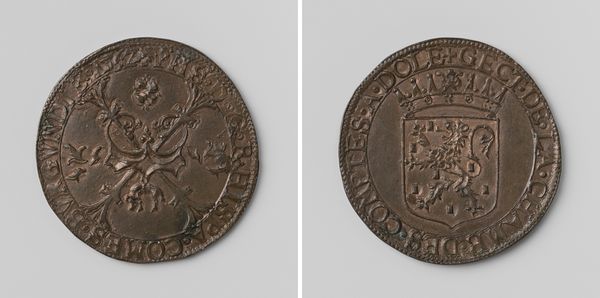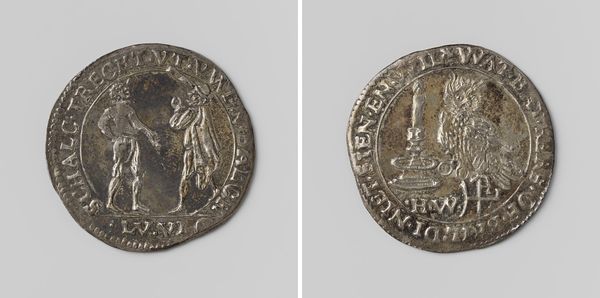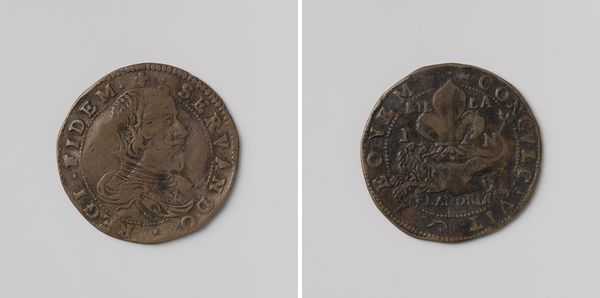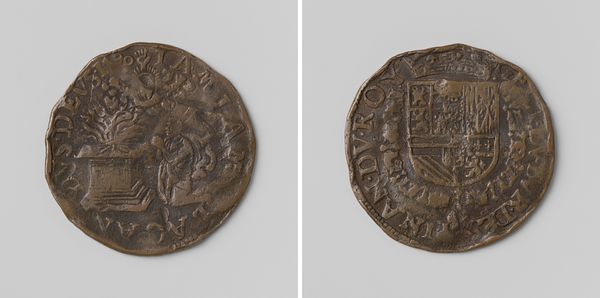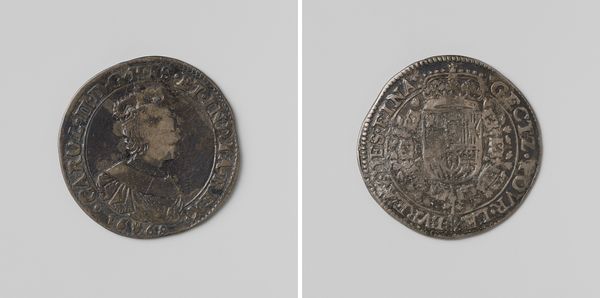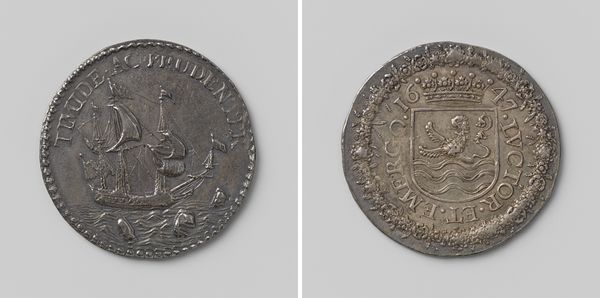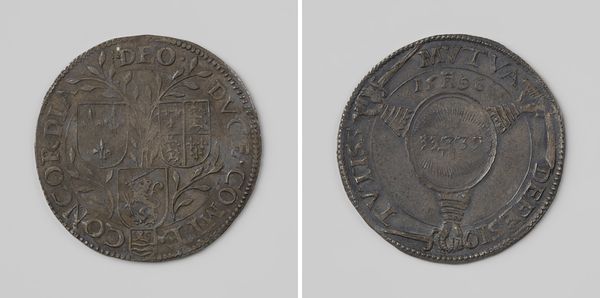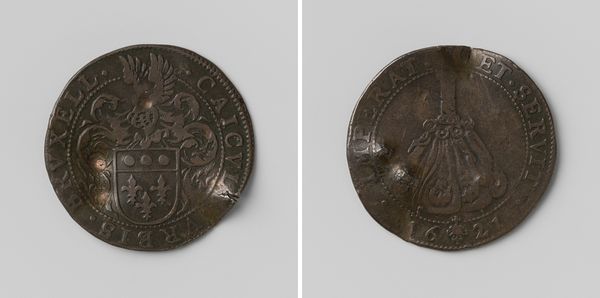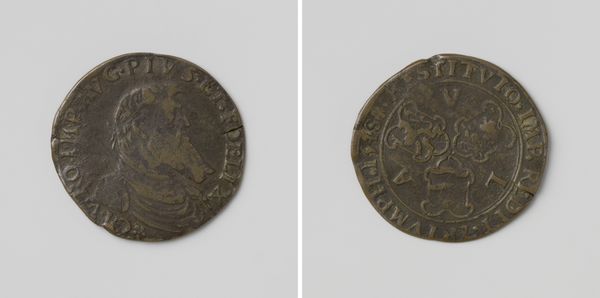
Filips IV, koning van Spanje, rekenpenning geslagen op last van de stad Gent 1640
0:00
0:00
metal, sculpture, engraving
#
portrait
#
baroque
#
metal
#
sculpture
#
sculpture
#
history-painting
#
engraving
Dimensions: diameter 2.9 cm, weight 5.98 gr
Copyright: Rijks Museum: Open Domain
Curator: Before us, we have a rather compelling example of Baroque artistry, though on a miniature scale. This is a 1640 medal created to honor Philip IV, King of Spain, commissioned by the city of Ghent. Editor: It immediately strikes me by its simplicity and muted tones; given the opulence we often associate with Baroque portraiture, the austere character feels atypical and striking. The almost metallic patina, I assume real rather than simulated, enhances its quiet drama. Curator: Exactly, the material—metal—and the engraving technique give it that subdued elegance. But look closer. Philip IV is portrayed with the kind of resolute gaze designed to project power. Consider the layered collar and detailed breastplate, symbols not only of his status but also, perhaps, an intended message of enduring rule to a region like Ghent under Spanish control. Editor: The circular format enhances that symbolism of totality and wholeness of control and possession of everything within its borders, with that slightly roughhewn quality and slight imperfection lends it authenticity and contrasts well with polished formality that the king suggests. What of the shield on the other side? It is equally important? Curator: Absolutely. The reverse shows the coat-of-arms of Ghent, surmounted by a crown. That pairing isn't merely decorative. It signifies a particular kind of relationship: Ghent acknowledging Philip's authority, while Philip, through the act of commissioning this medal, seemingly recognizes Ghent's importance. These kinds of medallions and emblems operate as symbolic negotiations between power and local identity. It’s cultural memory made visual. Editor: Fascinating! A formalist perspective tends to draw my gaze toward its aesthetic architecture, but this context adds profound depth. That tension of Spanish power, rendered on a tangible object with imperfections in surface texture and slightly irregular edge. Curator: Seeing the intersection between raw object, intention, and impact adds an essential understanding and layer to the King’s memory, and it provides insight into how iconography shaped cultural and political perception, even on a very small scale. Editor: Indeed. It provides another great tool to appreciate Baroque art and consider an image’s ability to echo cultural dialogues long after its creation.
Comments
No comments
Be the first to comment and join the conversation on the ultimate creative platform.
